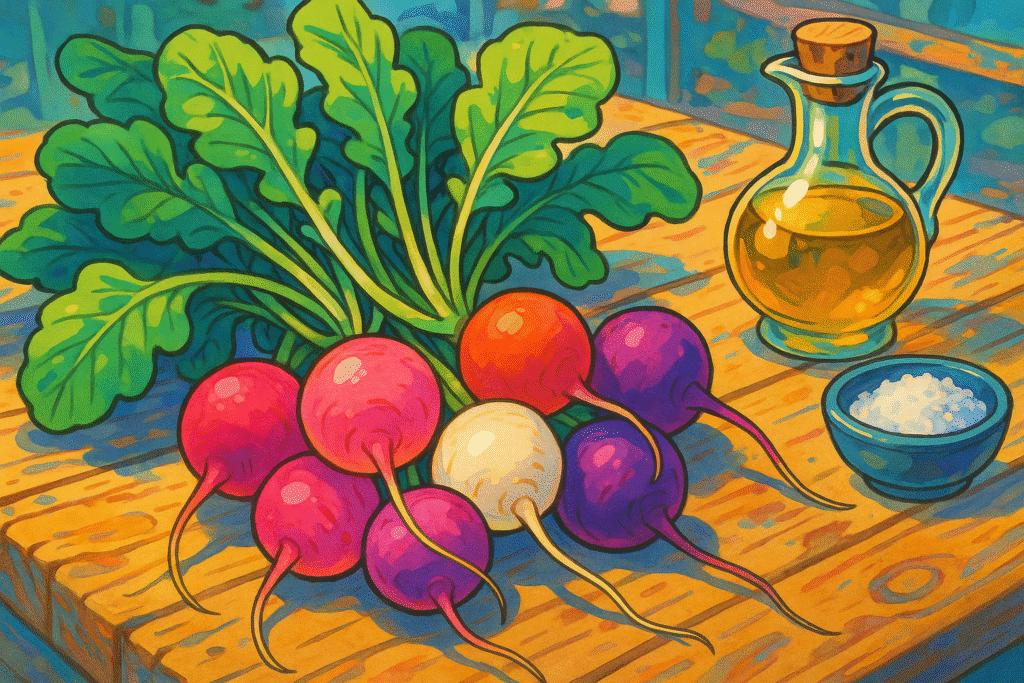Radish (Raphanus sativus)

About Radish
Radishes are small root vegetables with a zippy, peppery bite and a cool crunch. Their vibrant colors and quick-growing nature make them garden favorites — and palate cleansers in everything from tacos to pickles.
They’re edible top to root and surprisingly diverse.
The History of Radish
Radishes were one of the first domesticated crops, cultivated in Egypt, Greece, and China over 2,500 years ago. Workers on the Egyptian pyramids were said to eat radishes for strength.
They migrated across Asia and Europe, eventually becoming a staple in global cuisines — crisp, cheap, and packed with character.
The Science of Radish
Radishes are low in calories but high in vitamin C, folate, and antioxidants. Their peppery punch comes from glucosinolates and isothiocyanates, compounds shared with mustard and horseradish.
Their crunch comes from a high water content and fast growth.
The Geography of Radish
Radishes grow quickly in temperate climates and are harvested year-round in some regions. They’re essential in Indian, Japanese, Korean, and Mexican cuisines — used raw, pickled, or cooked.
In Japan, the daikon is king, while French breakfasts aren’t complete without radishes and butter.
Varieties of Radish
Cherry Belle
Classic red radish. Crisp and spicy, perfect raw.
French Breakfast
Oblong, pink-and-white. Mild and great with butter and salt.
Daikon
Large, white Japanese radish. Milder and juicy — used raw or cooked.
Watermelon Radish
Green on the outside, pink inside. Beautiful and slightly sweet.
Black Spanish
Bold, dark-skinned with pungent bite. Excellent roasted or grated.
FAQs All your questions about Radish: answered
Why are radishes spicy?
Their heat comes from isothiocyanates — the same compounds in mustard and wasabi.
Can you eat radish leaves?
Yes — they’re slightly bitter and great sautéed, in pesto, or soups.
How do you mellow out spicy radishes?
Soaking in ice water or roasting reduces heat and enhances sweetness.
Are radishes only eaten raw?
No — they’re delicious roasted, sautéed, or pickled. Cooking softens their heat.